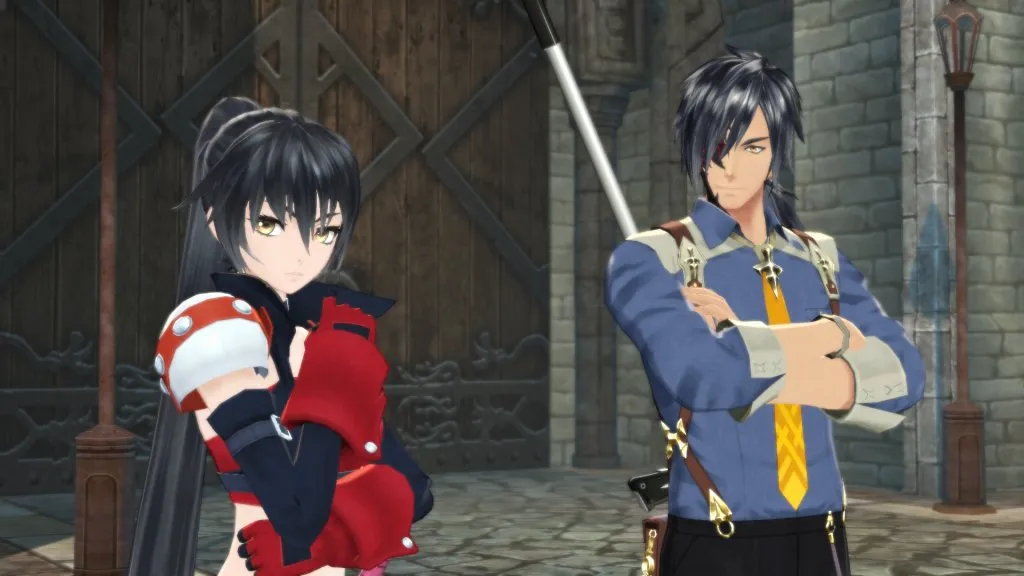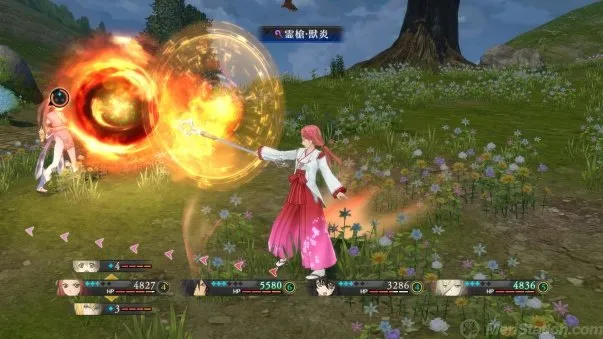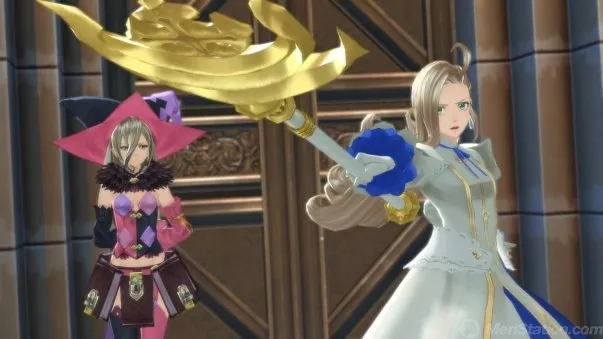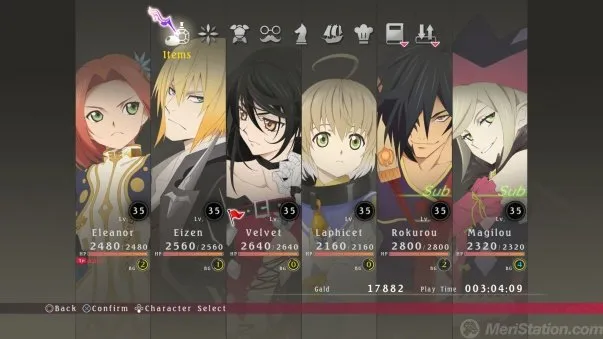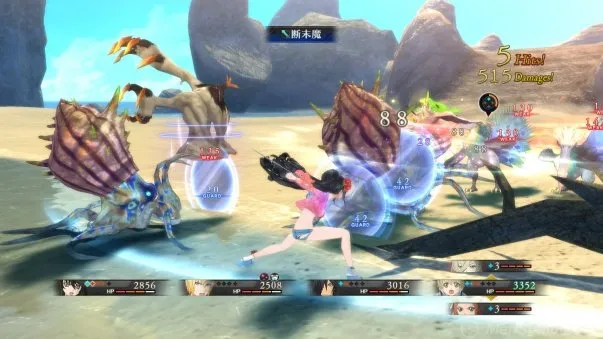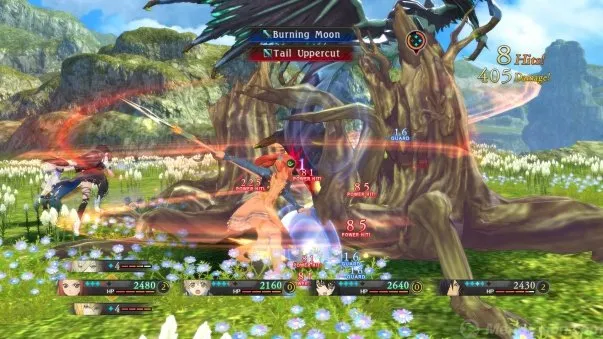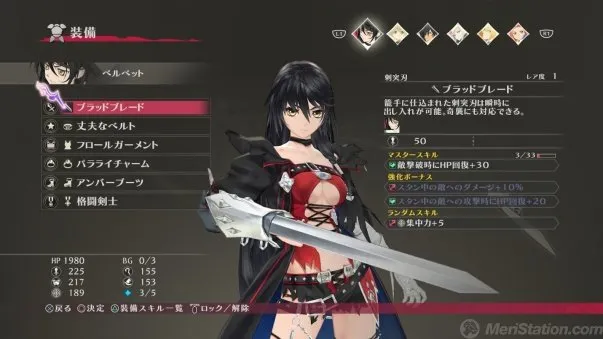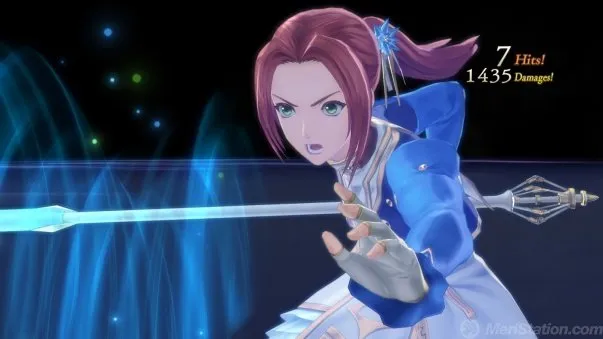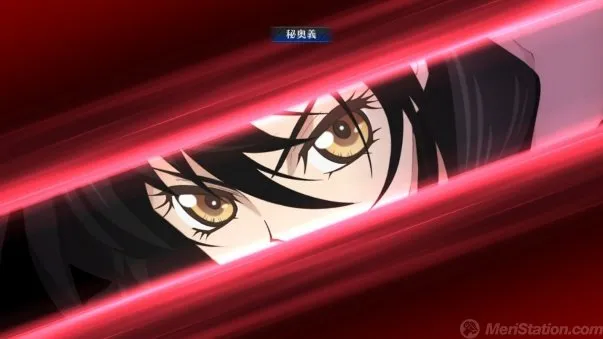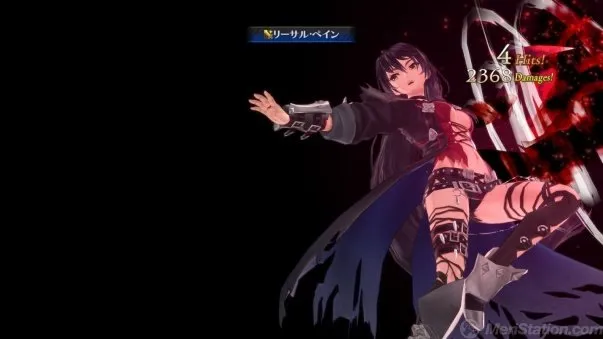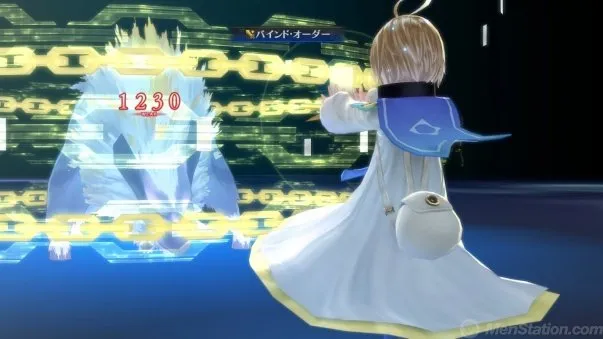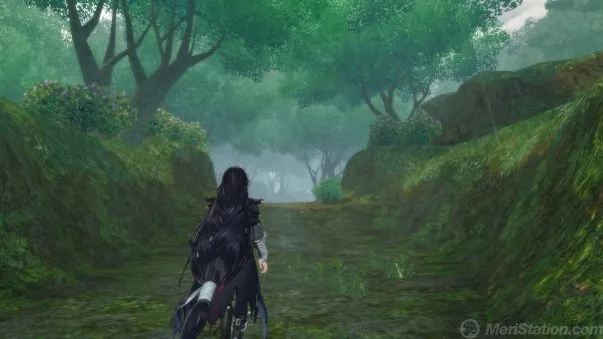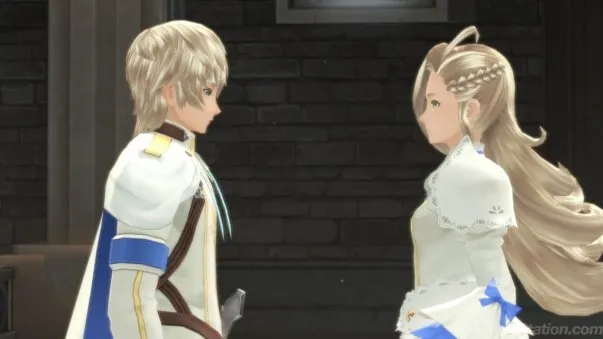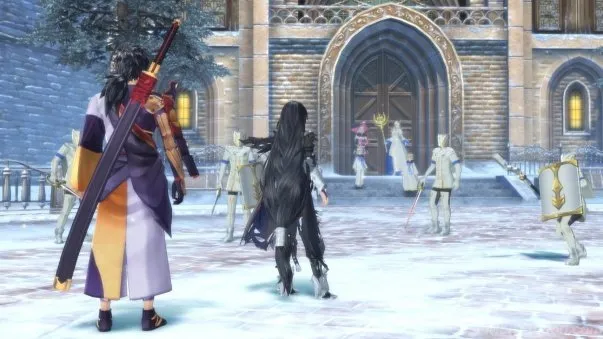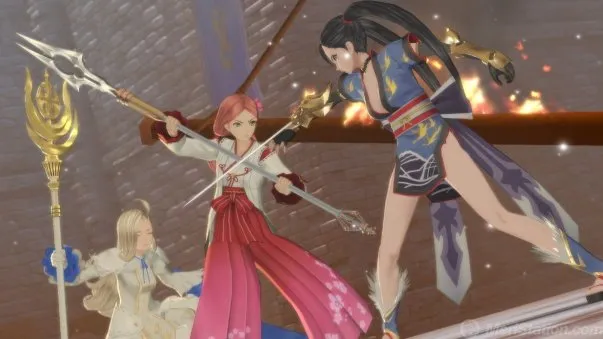One of the most solid deliveries of the JRPG saga of Namco Bandai with revenge as a great vehicle.
Analysis of Tales of Berseria
The Saga Tales of is part of the cast of classic franchises that one can resort to if you want to enjoy classics of the JRPG genre. With a style and a formula well known to all, and the changes they always dare to make -some with more success than others- in the combat system, the Bandai Namco series has been winning deliveries over the years. Tales of Berseria, which arrives today at the stores, is not only the last of them. It is also one of the most solid and interesting proposals that these 21 years of history leave us. Neither revolutionizes the franchise nor reinvents practically nothing. But what he proposes does more than good. And it has its own elements that are worth visiting if you are a fan of the genre and / or the saga.
They are already more than fifteen titles in the main saga behind them since the release in 1995 of Tales of Phantasia for SNES, but did not reach our territory until 2003 with the remake for Gameboy Advance. At the time the title was presented with several elements, especially in combat, which differed and much of the classic JRPG of the golden age of the nineties. In any case, it was not until the arrival of Tales of Symphonia (Gamecube), when the franchise was introduced. And he did it with a very powerful delivery at the level of content and playable proposal, although time has made a dent in some of its mechanics.
Since then there are several Tales of games that have been arriving in Europe -not all- among them, probably two of the best iterations seen to date: Tales of Abyss and Tales of Vesperia. Berseria has similarities with the aforementioned Vesperia, in the sense that they shine by doing many things well rather than by being points of inflection in a franchise that is almost always in motion, touching and changing mechanics. In addition, the game in question has the ability to convince the fans after Zeristia, which did not quite materialize among many users for certain proposals revamped in Berseria. These are.
Revenge as a vehicle
If you look back and look a bit at the argument of the last installments of the series, you will see that the heroes who star in these stories tend to be characters with a will for peace and a very clear purity. It happens in Zestiria, with the motivations of the protagonists of Xillia, or with the development of Yuri in Vesperia. In general, there is a certain aura or naive style in the description of both the protagonists of the series and their motivations and objectives. But this is largely broken with Velvet, the heroine who takes the reins of Tales of Berseria. The change with respect to other recent deliveries is more important than it may seem at first, and marks the development of the adventure in an interesting way.
Velvet Crowe is thirsty for revenge. In a world in which daemons are growing, creatures that attack and kill humans and that are sowing chaos, and where exorcists exist, knights prepared to put an end to such monsters, Velvet only has in his head to avenge the death of a being Dear. These facts, which are narrated in the first bars of play, offer a moral dilemma to the interesting player. We are not before a decision-making title that marks the adventure (Shin Megami Tensei type), but the development of the protagonist generates a series of questions in the user that are not trivial.
The great enemy of Velvet is, precisely, the hero of humanity because he stood up as the reference to end the daemons. He did it at the cost of a sacrifice, through ritual, of the character to which our protagonist wants to avenge. Scenography also plays an important role in creating this moral dichotomy. The red and black colors, close to what we can understand as evil or demonic, are those that predominate in the design of Velvet, while his enemies are pristine white priest, with angelic auras that come off their eyes, expressions and designs
This staging makes the argument of Berseria have a much greater interest than we have lived in some of the Tales of adventures. It is a path against the current, where the impressions of our surroundings collide with Velvet's only vengeful will. And all this is told in the right way. The heroine uses characters and actions, such as leaving someone behind, only for their own interest. The one to kill Artorius, his great enemy. It is curious how characters are recruited for reasons that have nothing to do with the heroism of ending an evil that wants to devastate the planet, as well as the selfish decision-making expressed by this half human and half daemon. Because that's another: Velvet, after some events, feeds on daemons and has a demonic arm used for such purposes.
The strength of the characters
But the protagonist of the title is not the only characterization worth highlighting. Unlike Zestiria, the characters have much more strength and interest. Soon we will meet two companions like Rokurou, a samurai with a faithful squire personality and a touch of sense of humor that suits him, and a crazy witch like Magilou. At first it may seem that this character becomes the typical member of the unsupportable team, but nothing is further from reality. His way of acting, halfway between madness and intelligence, provides some of the best moments of the game.
Eizen, a kind of pirate with very marked decision and values, or the interesting case of Laphicet, a Malakhim that joins the group and also opens moral dilemmas about his case (the malakhim are a kind of magicians that serve their masters and do what is asked, as if they were slaves) throughout the game. The cast is closed by Bienfu, a supporting character with a very particular design and who can be considered as the mascot of the team, and the role that we will not disembowel Eleanor, an excorcist who chases us at first.
Everyone has something to contribute, and although in most cases respond to types of characters that we have seen by active and passive in the genre over the past two decades, at the level of dialogue and script we will always find opposing positions, comments fun and contributions that are worth reading / listening. It is a solid team with the particularities of each one that generate currents of thought within the sole will of Velvet (revenge) with variations, some of them unexpected.
Explore, fight and eat
The formula of Tales of Berseria will not surprise anyone. The main change in the development of the adventure regarding Zestiria is that it abandons that open-and excessively empty-world of its predecessor to return to much more delimited areas, although of considerable size, where we are advancing in a more or less linear way. I say this because although it is true that the development is sequential from one point to another and from one objective to the next, it does not happen in a corridor. Each area of the world map that we visit will offer us different challenges, missions that we can solve in the order we want and extras of all kinds to deviate from the main path of the adventure.
The distribution of elements that surround our progress are known by all. Towns and cities with all kinds of characters that provide plot, context, shops to buy, places to rest, extras in the form of mini-games or tasks such as hunting enemies of different levels of difficulty and the main missions. As a rule, although it is not strictly followed, the main plot ends up in relay missions where we have to do tasks that are sent to us or ends up in a dungeon in which we have to solve some problem (generally, a final boss).
The enemies are always on screen, so there are no random battles and we decided when we fight with them in the overworld turn, although if they see us they will chase us and if they reach us, we will enter battle mode. The exploration allows to obtain varied objects, to find chests of all types or to look for a typology of enemy that allows us to fulfill some special event.
At this point it is important to stop to talk about the dungeons. Being as they are the strongest playable base of the game, by the type of enemies that run them and the final bosses that we face when we reach the key point, the truth is that they end up offering a somewhat irregular experience. In general they have an uninspired design in which there is not much loss, where the detours to find extras are very clear and we will hardly have relevant shortcuts. The fact of being able to avoid the majority of combats also reduces some of the challenge to these zones.
In recent titles such as Dragon Quest VII and VIII of 3DS, although there are no random combats, in dungeons there are many inevitable confrontations because the enemy occupies spaces that can not be crossed without touching them. Here, on the other hand, dodging enemies is relatively simple. We are not facing a particularly serious problem, the design of the dungeons, but they leave the feeling, especially in the first half of the game, they could offer much more.
The art of combat
The combat system of Berseria is in real time based on the well-known Linear Motion Battle System that has some variants. We have a series of Arts that we can assign to different attack buttons and that are combat actions of all kinds. In each of the four main buttons we can create a sequence of different arts that are happening if we press repeatedly, for example, the square. These combos are created taking into account the movements and their particularities, since there are arts that in concrete enemies provoke 'stun' or changes of state that give us advantage to continue chaining more blows.
It seems a simple system and that derives in crushing buttons, something that we will not deny happens in normal encounters while we explore. But when we start to find powerful enemies, bosses and monsters of higher levels is when you really understand the battle format. The characters have souls that are spent when we use arts. When the soul bar is completely consumed after launching attacks, the player is disadvantaged because he can receive lethal kickbacks and is very exposed. This bar recovers temporarily, hence it is not advisable to launch attacks like crazy in accordance with what circumstances. On the contrary, the format of strengths and weaknesses gains a lot of weight.
As we fight, we know the peculiarities of enemies. What kind of arts provoke specific states to enemies, hence it is important to create combos of arts according to each monster and use it in our favor. When we manage to inflict an altered state on the monster of the turn (or knock it out) we win a greater number of souls, and therefore we can make combos much longer. It is true that the game invites to abuse the constant change of arts looking for the 'stun' of turn to make longer combos, but without that it is difficult to overcome some opponents. All this does not lack special attacks and devastating attacks that consume a large number of souls but are lethal.
The combat system is completed with the possibility of defending ourselves with the guard and with the fast step that allows us to dodge at the right moment the enemy attacks in exchange for winning bonuses while we fight. We can assign strategies to be followed by our colleagues automatically (when launching breakthrough attacks, which one is dedicated to healing, etc.) and we can also control them by changing with a single Velvet button to others. Finally, we can stop the game and ask them to launch a specific attack as well.
In general the combat system works in an agile way, it is appreciated and a lot of power to control the camera with the analog stick at all times, and has a strategy component that is worth deepening to get the most out of it.
Cooking and other extras
One of the most interesting proposals of the game is the fact that you can cook all kinds of dishes with the characters. This, which is learned shortly after starting, allows us to prepare foods that improve attack and defense effects, recover vitality, improve the percentage of critics or enhance certain attacks. That's why it's interesting, when we explore Overworld, to look for all kinds of materials that can then be used in our favor. The system can be automated in such a way that when we are in a dungeon, we can indicate that after each fight we automatically eat - while we have the ingredients - a specific menu.
We also have several extra elements to take into account that bring variety to the adventure. On the one hand, mini-games. There are all kinds of them: to act as a waiter, to crush a bag of blows trying to get the maximum score, to play cards, to bust the maximum number of possible balloons, to do a mini-game with Bienfu while trying to jump as far as possible ... We have bonuses of all kinds, including getting a kind of coin that is used to change cosmetic accessories and skins for the characters.
Finally, two more proposals. On the one hand, the Gátoz, a breed of very cute and very Japanese cats that ask us to collect some orbs scattered around the world and use them to rescue kittens from pink chests in exchange, not always, for rewards. We can also send ships to explore unknown places in the world (it is done automatically and have a variable duration) in exchange for discovering rewards and treasures. If to all this we add the hunting events, where they are proposed to us in exchange for powerful money rewards, to look for powerful and rare enemies, with particularities in combat different from the others, we have a great amount of content to do beyond the adventure.
The road to victory
Tales of Berseria is not one of the longest titles in the series. Those of us who enter the series with Tales of Symphonia remember to spend 100 hours quietly on the Gamecube adventure. Here in about 40 hours you can finish the main campaign with detours for some tasks. A more than laudable duration that also allows keeping the pace of the main adventure without too many ups and downs except for some moments in certain of the aforementioned dungeons. One of the problems of the game is that in its normal difficulty it is a very simple one and it does not oppose difficulty. Therefore we recommend starting with the next level or the highest level.
It is not necessary to stop to 'farmear' with enemies to gain level, and only with the combats by accident before reaching the bosses we have enough (less in the final stretch that requires some rise, yes) to move forward without stopping or die in combat In fact, even enemies of these 'rare' with higher levels (6-7 above our team) end up succumbing if we play with some head using our weapons. In this sense, playing in greater difficulties -or in a second game- implies several changes to be taken into account. On the one hand, the enemies are harder and above all they need certain more demanding characteristics to be defeated. We will also have changing rewards. More money, less experience. They also modify the way - especially in the bosses - of attacking us.
As we progress through the game we will encounter multiple combats. When we come into contact with two or more enemies in the open world we will enter what is called "dangerous combat", where enemies gain in difficulty, fleeing is very complicated and reinforcements appear in the form of more monsters on the battlefield. In addition, they attack more frequently. This, which is bearable in normal difficulty, is really complicated in high difficulties and a plus to take into account for those who seek a greater challenge than what is offered in a standardized manner.
All this is not missing the team that we can improve and change our characters. Something that stands out in the game is that there are few armor, accessories or weapons that really have a net benefit application for each character. Most of the elements that we find and equip have pros and cons. They improve the total life, but they reduce the agility; They are better with certain types of arts but less effective with others. Hence, create a character according to our style (we can also choose "styles" of combat that enhance some attacks or other) is often a bobbin lace advantage of the objects and compensating their contras with another type of equipment. In high difficulties with less combat experience but more money, investing the 'pasta' as a team during visits in the cities is vital.
Technical section
Tales of Berseria stands out for the artistic style so marked in the series and that here is especially attractive for the design of several of the main characters, the great villains and some types of monsters and enemies of the most original Dragon Quest style - but with a stroke different from that of Toriyama, we refer more to the way of understanding the enemy as an original 'bug' and often carefree. The title is especially rewarding in the anime scenes, which are not few, and which fit perfectly into the visual style we see in combat. As far as design is concerned, Velvet's type of hypersexualized dress does not go unnoticed, something very Japanese -no surprise- but it is something that attracts attention.
In fact in the game itself jokes are made about whether it is cold in smaller cloths in the middle of the snow, as if the developer was aware of the contrast that involves. In any case we will have a lot of skins and accessories to be able to dress and dress all the characters in different ways, also changing the type of hairstyle. Something that is appreciated because this dress allows to maintain the attributes of the "core" team and it is only at an aesthetic level.
But it also has obvious technical problems that should make rethink if the saga does not deserve a facelift with a more updated engine. The open stages and the dungeons are still somewhat empty and with little detail, and the game definitely does not stand out especially beyond the modeling of characters and special effects in combat, where when we have a lot of enemies sometimes there is some framerate In return, we have a very powerful soundtrack, with great moments and melodies that go perfectly. The game, in this sense, is much stronger than its predecessor. It also allows us to change the voices between English and Japanese while maintaining subtitles and menus in Spanish.\
conclusion
Tales of Berseriais one of the most attractive iterations of the Bandai Namco saga. That, be clear, without assuming any revolution or a drastic change in the way of understanding the franchise. But it offers us a story of revenge that provokes moral dilemmas in Velvet, protagonist and one of the most interesting characters of Tales of that is accompanied by a cast of solid and empathetic travel companions. To the paths that the main argument takes us, with details and surprises that are worth following, we add an agile and simple combat system with an important strategic component, a lot of extras to entertain us and a combination of Anime scenes and first soundtrack. The title has some very uninspired dungeon designs,JRPG full of virtues, which plays the cards of the Tales of saga above the average and easily caught from the first moment to the end.
The best
- The argument and motivations differs from other games in the saga and proposes interesting approaches
- The characters, with personality and charisma, especially Velvet
- Agile combat system with an important strategic component
- A lot of things to do
- Personalization of the team, both in skills and cosmetic
- The cinematics and the soundtrack
Worst
- Exceedingly simple to overcome on standard difficulty
- Several dungeons with an uninspired design
- Some technical inconsistencies
Game of remarkable finish that we will enjoy and remember. A good purchase, highly recommended for lovers of the genre. It is well cared for at all levels.
Gameplay 8
JRPG with the hallmarks of the saga. Combat system in real time, agile and with some variants that provide an interesting strategy component, exploration by several locations with extras, sidequests and special monsters to beat and a main plot that can be completed in 40 hours. On normal difficulty it is exceedingly simple.
Graphics 7
The modeling of the characters and the anime sequences are the best of the title, as well as a large cast of skins and accessories to personalize in a humorous (and erotic in some cases) the characters as we want. The problem is that at the level of detail and scenarios it is still a step below and has some technical setback, such as some framerate fall.
Sound 9
The soundtrack takes a step forward and offers a lot of catchy melodies that fit very well in each moment. High-level special effects and voices that can be played in Japanese.
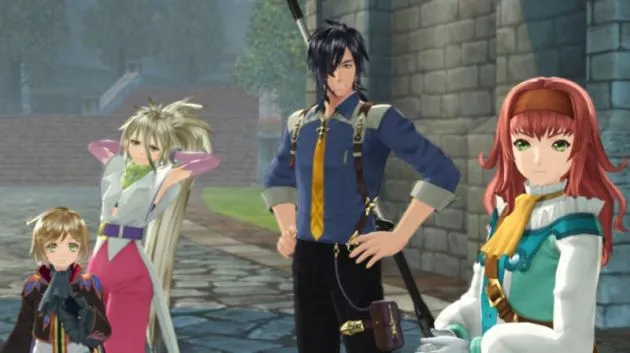
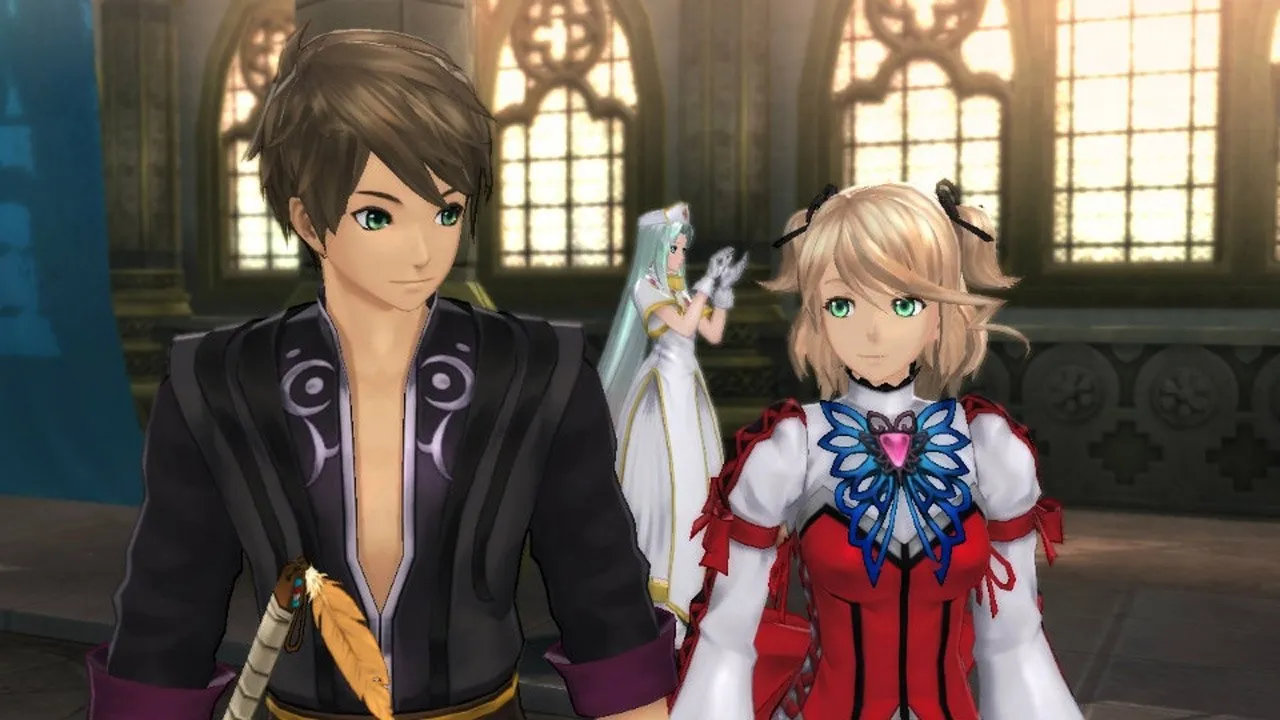
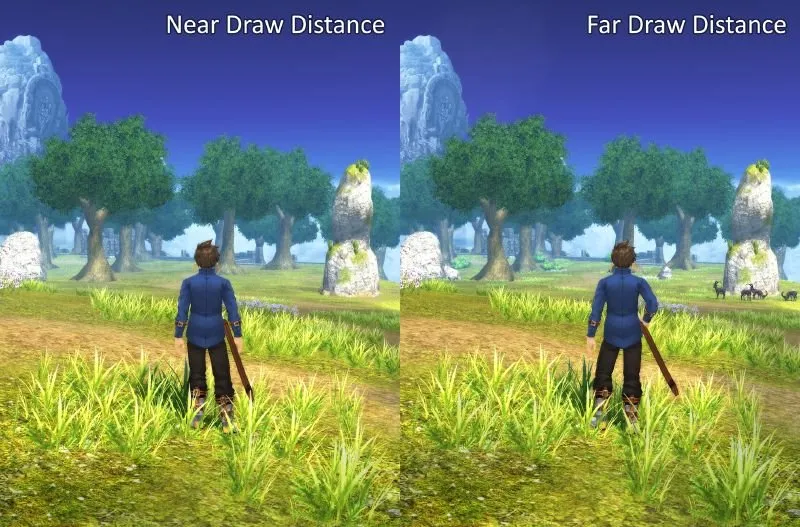
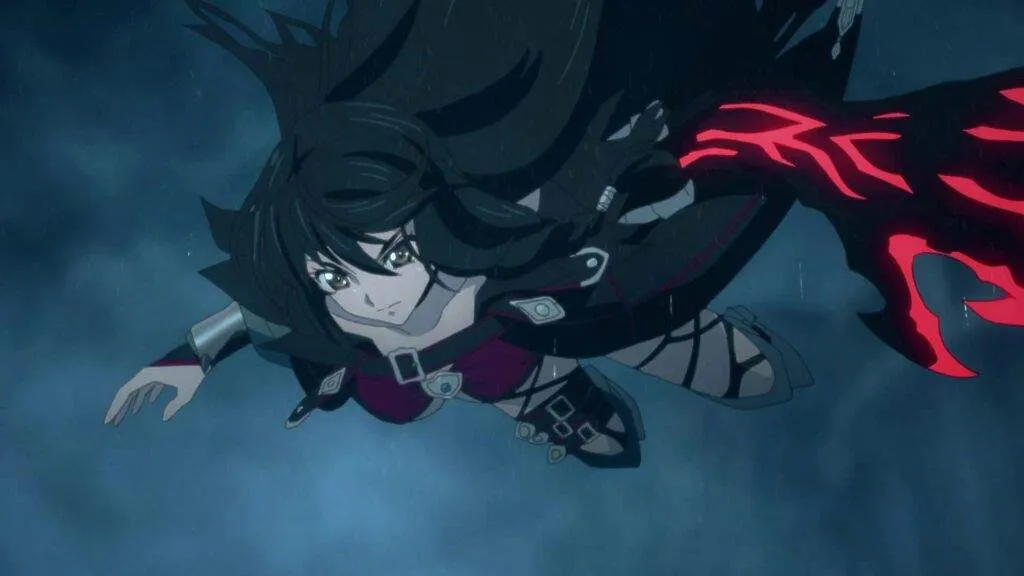
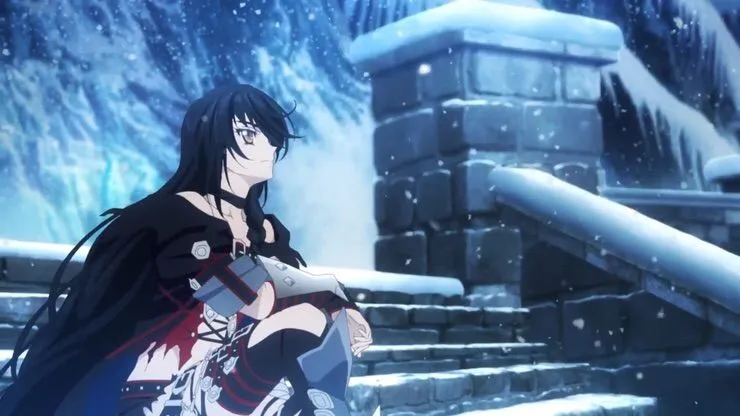
 );
);
1-6 IMAGECREDIT

